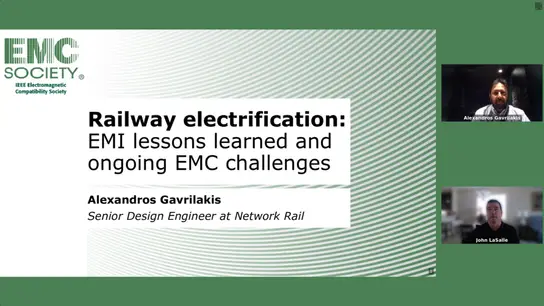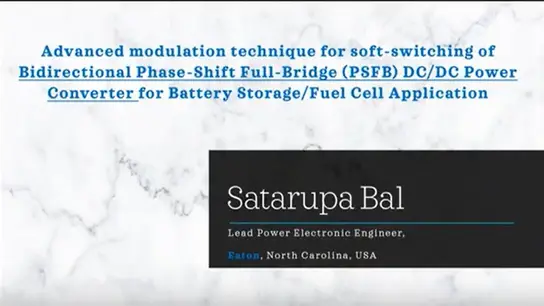Frequency-Selective Reduction of Power Electronic Switching Noise by Applying Synthesized Gate Signals
Caroline Krause, Andreas Bendicks, Stephan Frei
-
Members: FreeEMC
IEEE Members: $11.00
Non-members: $15.00Length: 00:21:21
09 Aug 2021
The high-frequency switching of power transistors in electronic systems can be a significant source of electromagnetic emissions (EMI). Simple measures like reducing the highfrequency disturbances by introducing an additional gate resistor lead to an increase of the switching losses. This creates a conflict of interests between the reduction of disturbances and high system efficiency. More complex active gate drivers offers improved compromises between EMI and efficiency. Avoiding steep switching slopes, overshoots or sharp edges are typical measures. The whole spectrum is modified this way and efficiency is still affected. In many cases, only a narrow banded modification of the spectrum might be needed to avoid the excitation of critical system resonances. This can be reached by a target signal-oriented control of the gate of the transistors. In the target signal the critical RF components should be reduced. Maximum control of the target signal is possible with fully synthesized gate signals. The reduction of some harmonics in the switching spectrum may lead to overshoots in time domain due to the Gibbs phenomenon. These overshoots may violate the physical limits of a transistor and cannot be realized. In this work, a method is presented to determine the target signal considering all physical limits. The found approach is applied in simulation to the signal of the drain-source voltage of a boost converter to reduce the harmonics in the FM broadcasting range. The gate control signal is determined for this application.


